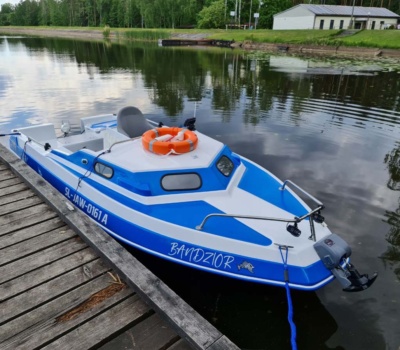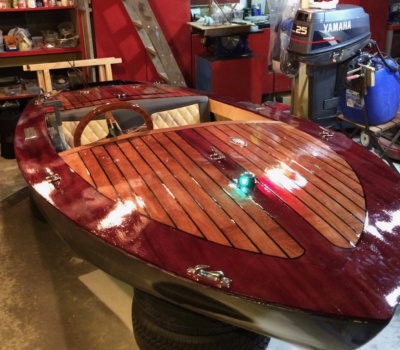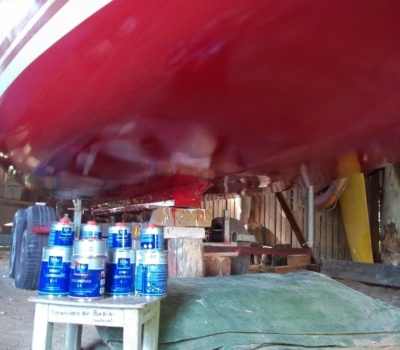„I used Antifouling Sea-Line two seasons ago (in 2014). Before the beginning of the 2015 season, I painted the wooden rudder, ,,newly secured” with Le Tenkinios, a natural oil varnish, with Antifouling Sea-Line (in two layers).
The remaining paint was used on the hulk and – to my surprise – I did not find any difference in the quality of antifouling security compared to the one made the year before. Similarly surprised was the boatswain who every single day launches yachts at my marina. He stated that many yachts were covered with shells but he did not find anything at my Ka-Haar. Making preparations for wintering, I cleaned the whole yacht therefore in the pictures there are white damp patches visible, the remains of the gelcoat cleaner.

Antifouling Sea-Line versus fouling at Zalew Szczeciński, the score is 2:0.
The third round „Antifouling Sea-Line versus fouling at Zalew Szczeciński” begins in just three months. My plan of the winter renovation works at the bottom includes securing minor mechanical damages, from the bottom and the rudder (max. 10 cm2), with antifouling paint. Instead of working hard at the renovation of antifouling surface, I will devote my winter evenings to reminiscing this year’s cruises.”
October 2015, text and pictures by Piotr6 (www.sailforum.pl)

Renovation of the Spanish motorboat Ducauto caribe. “Cut in half, gutted and made according to

Cosmetics Sea-Line use in Polish Army for cleaning and protect Sea Gun AM35 on „ORP

Mr. Wojciech Ceiślik, boatbuilder Glen-L Squirt: „I recommend Sea-Line products to everyone who builds and

„… It was not easy, hard job on knees with mask and glasses. Feeling like
If the scratches are not deep, then we can renew the scratched side by polishing with Sea-Line polishing pastes. Above the waterline, when the scratches are not deep, the surface can be repaired with a DRY FAST gel coat filler. Deep scratches should be filled with epoxy filler (selected depending on the requirements of the scratched surface), painted with a primer and then painted with topcoat.